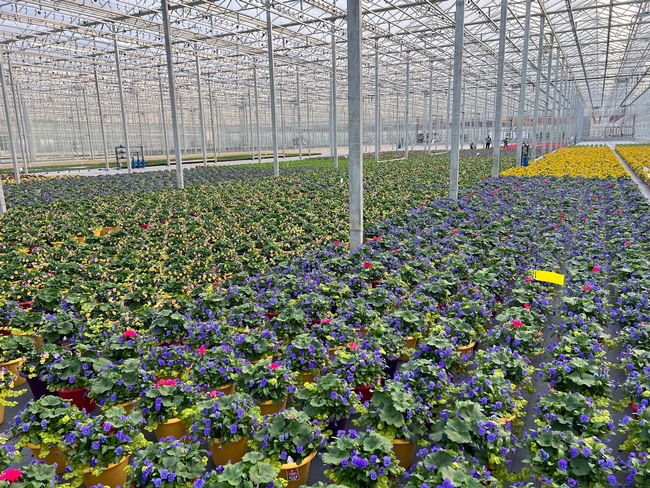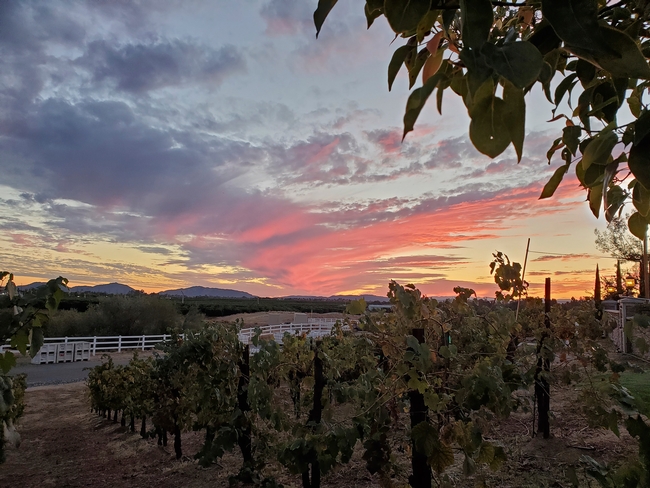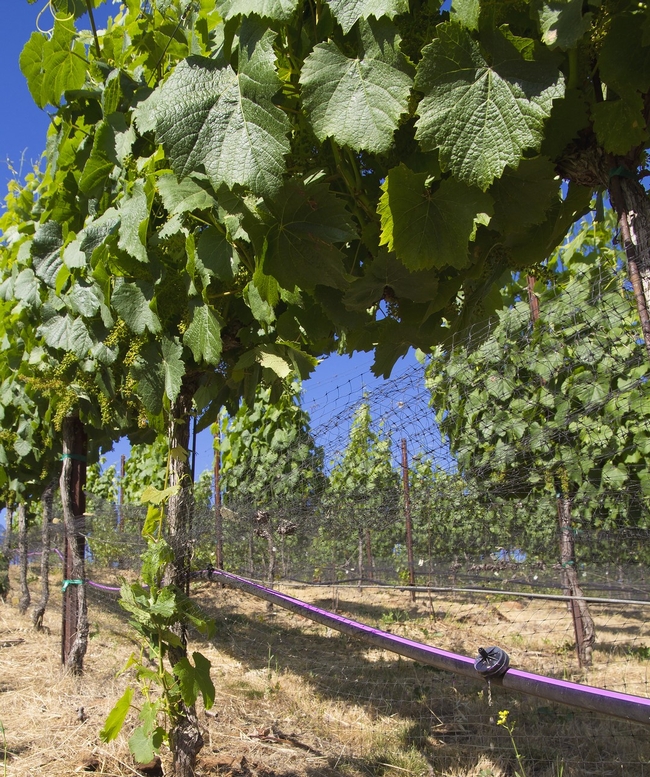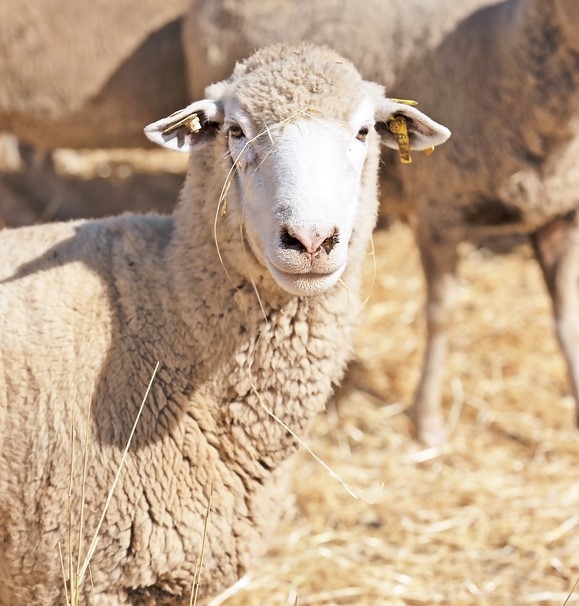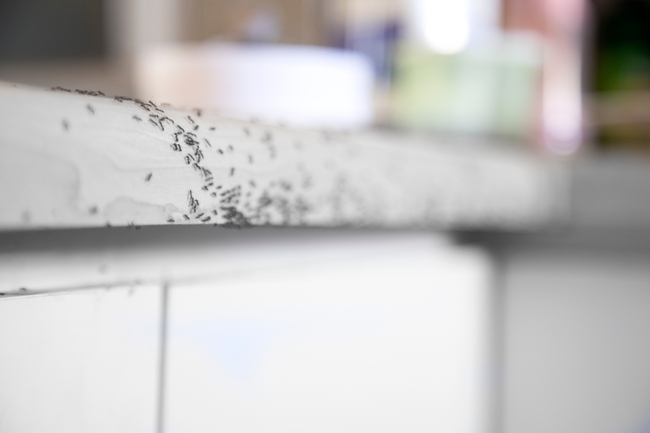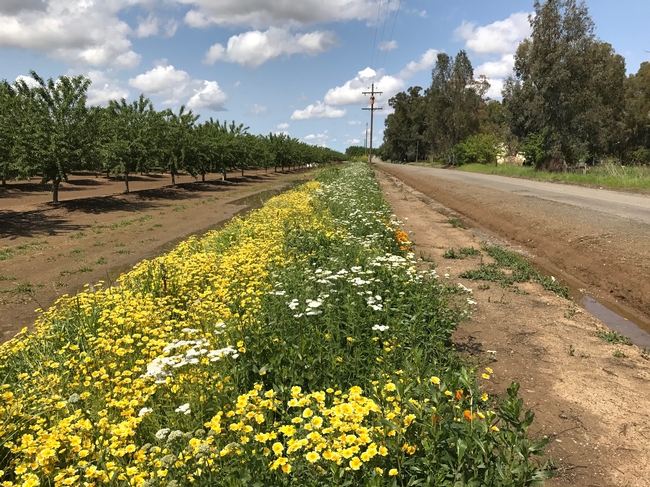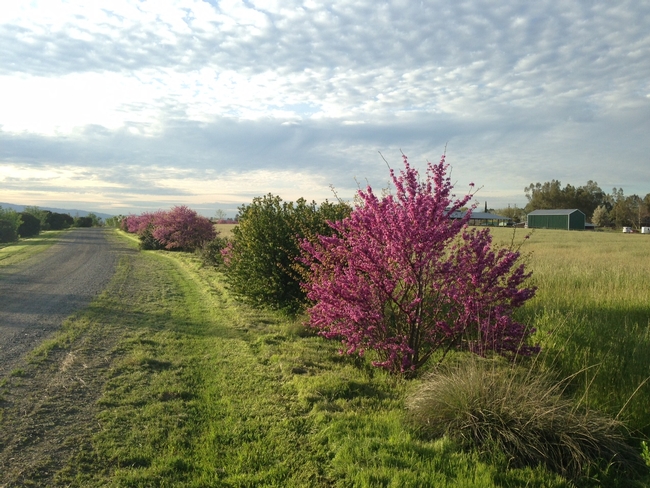Posts Tagged: control
Growers invited to take indoor farming survey
Researchers seek insight on emerging controlled environment agriculture trends
Greenhouse operators are encouraged to participate in the 2023 State of Controlled Environment Agriculture survey. IUNU, a technology company that specializes in AI and computer vision solutions for the agriculture industry, and the University of California Agriculture and Natural Resources are conducting the survey to gain insights on emerging trends and challenges to share with the controlled environment agriculture industry.
The survey takes approximately 25 minutes to complete. All growers using CEA – greenhouse, high tunnel or indoor – are invited to participate. All data collected is confidential and shared only as anonymous trends. No identifying information is ever shared. Growers who participate will get early access to the survey results report and will get access to an exclusive webinar to discuss the results with the authors of the report.
The fourth State of CEA Survey can be completed at https://www.surveymonkey.com/r/FVXJSY9.
The report, first released in 2016, was formerly titled “State of Indoor Farming” and managed by Artemis, which was acquired by IUNU in 2021.
This year, IUNU has expanded the survey to include the different leading segments of the controlled environment agriculture industry: greenhouse fruit and vegetable, and greenhouse ornamental production.
UC ANR's VINE agrifood technology innovation program, Global Controlled Environment Agriculture Consortium (GCEAC), and UC Davis-led AI Institute for Next Generation Food Systems (AIFS) are collaborating on the report.
“An industry-led, market-driven approach to guiding innovation priorities and investments is critical as we consider the future of indoor farming,” said Gabe Youtsey, UC ANR chief innovation officer and co-founder of The VINE. “I'm thrilled to partner with IUNU on the development of this State of CEA report with our UC innovation teams from The VINE, GCEAC and AIFS to create a robust state of CEA report that will guide our CEA open innovation priorities this year.”
Since the survey launched in 2016, more than 500 growers have participated in the survey and more than 2 million people have downloaded the report. The industry reports have become one of the most widely circulated and respected sources of industry data.
"This report is a trusted resource for the industry and we're thrilled to bring it back in an expanded capacity,” Allison Kopf, IUNU chief growth officer, said. “Over the past year, we've seen a swell of news around our industry. This report will go deeper into those stories and share data on how companies are performing, big market opportunities, and the real challenges growers are facing.”
Past CEA reports are available for download at https://artemisag.com/guides_reports.
About IUNU
Founded in 2013 and headquartered in Seattle, IUNU aims to close the loop in greenhouse autonomy and is focused on being the world's leading controlled environment specialist. IUNU's flagship platform LUNA combines software with a variety of high-definition cameras – both fixed and mobile – and environmental sensors to keep track of the minutiae of plant growth and health in indoor ag settings. LUNA's goal is to turn commercial greenhouses into precise, predictable, demand-based manufacturers that optimize yield, labor and product quality. www.IUNU.com
About The VINE by UC ANR
The VINE is California's agriculture, food and biotech innovation network powered by the University of California Agriculture and Natural Resources. We believe that the state's continued prosperity rests on creation of more productive, sustainable and equitable food systems. Every day, we harness the power of open innovation to connect entrepreneurs to a broad network of public and private sector resources to enable them to grow and scale globally, build collaborations that catalyze the development of climate-smart technology-based solutions to solve industry challenges, and grow regional capacity to support global innovation as an economic opportunity – because our future, and the nation's, depends on it.
The Global Controlled Environment Agriculture Consortium – an initiative of The VINE – seeks to build a worldwide ecosystem to bring technology to market that addresses global challenges in food, health and sustainability. GCEAC is an open innovation partnership between industry, university and government sectors in the United States and The Netherlands, led from California.
Suppliers, retailers warn California grape growers of herbicide shortages
Supply-chain crisis forces some to pivot to mechanical, biocontrol measures
Driving through her vineyards on a chilly morning in December, Hortencia Alvarado is taking comfort – for now – that the weeds she sees are all yellow. But there remains a nagging worry that, like the pesky plants, is merely lying dormant for the season.
When March rolls around, and the first signs of new green growth appear on the vines, Alvarado and other vineyard managers will again have to confront the ongoing shockwaves of the global supply-chain crisis.
Growers of grapes – the third-highest valued agricultural commodity in California at $4.48 billion in 2020 – likely won't be able to access the herbicides that they usually apply.
“I definitely need to start thinking and considering it because I don't want to be in that situation where I don't have [the herbicide] when I need it,” said Alvarado, a vineyard manager in the San Joaquin Valley.
Imperfect alternatives
She first noticed the effects of the shortages this past August, during the application following the harvest of early varietals. Alvarado's agricultural pest control adviser had recommended a different product, instead of their usual standby, Rely – because none of the handful of suppliers in California could find it.
Then Alvarado's foreman started reporting that the substitute wasn't controlling the weeds.
“We were using some other stuff that wasn't as good, so basically we were wasting money on stuff that wasn't doing what we wanted it to do,” Alvarado explained.
The need for more machines or labor is just one result of the herbicide shortage, said George Zhuang, University of California Cooperative Extension viticulture farm advisor in Fresno County. Zhuang has received “a lot” of calls from growers about the chemical supply issues, which are also affecting fertilizers. He's been urging them to move away from traditional herbicides to mechanical means or biocontrol such as sheep or fowl – even though they might be more expensive.
Zhuang estimates that while a weed program comprises 5% to 10% of total production costs in a normal year with the usual herbicides, the use of nonchemical alternatives could hike that percentage up to 10% to 20%. In addition to their impact on the bottom line, effective herbicides are especially crucial to grape growers because vines – unlike tree crops – cannot naturally shade out weeds with expansive canopies.
“Right now, people can still scramble around and find some limited chemicals to make sure the crop is successful for the harvest, but if the situation goes for another year, I think there's going to be a panic in farming communities,” Zhuang said.
Herbicide challenges expected to linger
Unfortunately, the availability of certain products is likely going to be “challenged” into at least the middle of 2022, according to Andy Biancardi, a Salinas-based sales manager at Wilbur-Ellis, an international marketer and distributor of agricultural products and chemicals. Biancardi said that the suppliers he talks to are advising people to make preparations.
The supply of glyphosate, the key component in products such as RoundUp (used by many Midwestern farmers), appears to be most affected, Biancardi said. As a result, that shortage has put the squeeze on alternatives such as glufosinate, used in products like Rely – the herbicide favored by many California grape growers.
“The cost of glufosinate has definitely gone up because there just isn't enough, so everyone is obviously marking it up,” said Biancardi, who estimates that prices for both glyphosate and glufosinate are up 25% to 30% for growers.
Alvarado said that while large commercial operations are able to pay the premium prices or shift to other weed control measures, some smaller growers have essentially given up the fight – simply letting the weeds take over.
“They're just letting it go wild until the dormant season,” she said. “They're hoping that – by when they do start to spray [around March] – they'll hopefully have that Rely.”
Silver lining to supply crisis?
Large-scale growers and retailers are buying up those scarcer products when they can, in anticipation of future shortages during critical times. Biancardi said that while his company traditionally runs inventories down at the end of the season, they are instead stocking up on herbicides that customers will demand.
“Careful planning and forecasting is going to be more important than ever, that's really the key,” he said. “At this point we can't guarantee ‘business as usual,' based on what we're hearing.”
Shaking off old habits might actually bring some benefits to business, according to Alvarado, as a forced shift away from chemicals could prove to be a selling point for customers, from a sustainability and marketing standpoint.
“Out of this shortage, there might be some good, some wins,” she said, “but at the same time, we're going to need some answers – I think it's going to be a bumpy road.”
Calling the confluence of drought, record heat and a shortage of chemicals a “perfect storm,” Zhuang said that consumers could start feeling those jolts as well.
“Eventually, somebody is going to eat the costs – either the farming community or the consumer is going to eat the cost, I hate to say it,” he said.
Controlling ants the healthy way
Spotting ants in the home or yard is no reason to reach for insecticide sprays or call an exterminator. UC Cooperative Extension experts say the insects can be managed by residents in ways that are effective, inexpensive, safe and environmentally kind.
“Ants are probably the No. 1 most common pests of our homes and gardens,” said Carolyn Kinnon, an environmental horticulturist and instructional associate at Mira Costa Community College. “Scientists find chemicals in our waterways that include pesticides commonly used to kill ants.”
Kinnon teamed up with UCCE community education specialist Scott Parker to present a Healthy Garden-Healthy Home online ant workshop during the COVID-19 pandemic to take the place of a planned in-person event. Healthy Garden-Healthy Home was initiated in 2005 with a grant from the California State Water Resources Control Board and continues with funding from San Diego County. With the move online, the workshop attracted four times more participants that usual.
“A silver lining of the COVID disaster has been our ability to reach out to many more individuals,” Parker said.
Healthy Gardens-Healthy Homes aims to cut residents' use of chemicals and reduce soil erosion that can wash into gutters with irrigation or rain water, course through storm drains and into streams, reservoirs and the Pacific Ocean. During the recent UCCE webinar on healthy ant control, Kinnon introduced science-based solutions that can be combined to keep ants at bay.
Use ant biology to battle ants
Ants are always looking for food and will forage any accessible source. Short circuiting this biological need is the first approach to controlling the pest. Outside, ants are often attracted to a sticky, sweet honeydew that pests like aphids leave behind when they feed on plants. Washing off aphids and honeydew with a sharp stream of water from the hose reduces the food source.
In spring, Kinnon said, ants like to feed on proteins, like seeds, nuts, dog food and other fatty substances. Fallen nuts, bird seed and leftover pet food should be discarded to reduce ant activity.
“When honeydew production from sap-sucking insects declines in the hot summer, and there is an absence of food sources outdoors, ants may come indoors,” she said. “Ants will travel several hundred feet in search for food.”
Removing inside food sources – like spills on counters and floors – and blocking access – by filling in holes and cracks – is the first defense against an indoor ant invasion. Kinnon recommends keeping food containers clean and sealed, rinsing empty recyclables – particularly sugar-sweetened beverages – and wiping up grease on barbecues and stove tops.
Wipe up ants and their chemical trails with an all-purpose cleaner, and fill tiny gaps, cracks and holes with caulk to make their entry difficult.
Managing expectations
Another way to achieve environmentally friendly ant management is coming to terms with the fact that they can't be eliminated from outdoor areas.
“Our goal is to focus on reducing population numbers,” Kinnon said. “We have to tolerate a certain number.”
Spraying a pesticide on an ant trail or sprinkling granular pesticides will only kill a fraction of the ants in the yard. Those materials can run off and pollute watersheds.
Baits
If cleaning up food sources, exclusionary measures and increased tolerance aren't enough, pesticide baits are an additional integrated pest management tool.
“This works because female worker ants take the bait back to the nest and feed it to other ants in the colony,” Kinnon said.
The bait must be slow acting so it doesn't kill the worker before she gets back to the colony. Kinnon recommended baits with no more than .5% active ingredient. For best bait placement, follow trails to find the nest and place the bait close by in a safe bait station. If the nest can't be found, the bait station can be placed along the trail.
Summer safety: Tips to avoid foodborne and heat illnesses
Happy summer! It's time to get the barbecue grilling and the pool party started. To keep your summer healthy and fun, UC ANR offers some important safety tips.
Food safety
Food poisoning is a serious health threat in the United States, especially during the hot summer months. According to the Centers for Disease Control and Prevention (CDC), 1 in 6 Americans suffer from a foodborne illness each year, resulting in thousands of hospitalizations and 3,000 deaths.
Both the CDC and U.S. Department of Agriculture (USDA) suggest four key rules to follow to stay food safe:
- Clean: Clean kitchen surfaces, utensils, and hands with soap and water while preparing food. Wash fresh fruits and vegetables thoroughly under running water.
- Separate: Separate raw meats from other foods by using different cutting boards. And be sure to keep raw meat, poultry, seafood and eggs away from other items in your refrigerator.
- Cook: Cook foods to the right temperature; be sure to check internal temperature by using a food thermometer.
- Chill: Chill raw and prepared foods promptly.
Here are some additional tips from the USDA. Be sure to check out the CDC's comprehensive food safety website, which also has materials in both Spanish and English. For food safety tips in real time, follow USDA Food Safety on Twitter.
Summer also means more outside grilling, which can pose unique food safety concerns. Before firing up the barbecue, check out these five easy tips from UC Davis.
Handling food safety on the road
Before you take off on a road trip, camping adventure or boating excursion, don't forget to consider food safety. You'll need to plan ahead and invest in a good cooler.
Remember, warns the USDA, don't let food sit out for more than one hour in temperatures above 90 degrees F. And discard any food left out more than two hours; after only one hour in temperatures above 90 degrees F.
If there are any doubts about how long the food was out, it is best to throw it out!
Get more food safety tips for traveling from the USDA.
Avoid heat illness
“Summer can be a time for fun and relaxation, but in warm climates, we need to stay aware of the signs of heat illness and help keep our family members and co-workers safe,” says Brian Oatman, director of Risk & Safety Services at UC ANR.
“UC ANR provides comprehensive resources on our website, but it's designed around California requirements for workplace safety.” But, Oatman notes, much of the information applies.
“The training and basic guidance – drink water, take a rest when you are feeling any symptoms and having a shaded area available – are useful for anyone at any time.”
To increase your awareness of heat illness symptoms – and to learn more about prevention – Oatman suggests a few resources.
“Our Heat Illness Prevention page has many resources, including links for training, heat illness prevention plans, and links to other sites. One of the external sites for heat illness that I recommend is the Cal/OSHA site, which spells out the basic requirements for heat illness prevention in the workplace. It's also available in Spanish."
For those on the go, Oatman also recommends the National Institute for Occupational Safety and Health (NIOSH) mobile heat safety app.
Super blooms in the Central Valley: Why it’s not just about the color
Have you seen the blaze of super blooms popping up alongside orchards and field crops in our rich agricultural Central Valley? The corridors of poppies, tidy tips, yarrow, baby blue eyes, and redbud planted by farmers, dazzle us with color, but they serve a purpose, too.
The flowers provide nectar and pollen for the pollinators, including honey bees, bumble bees and carpenter bees. Look beyond the buzz, and you'll see other beneficial insects, such as lady beetles (ladybugs) and their larvae devouring aphids, and tiny parasitoid wasps preying on stinkbugs and armyworms. They're (unpaid) pest control agents at work.
Farmers are taking notice. Knowing that most beneficial insects rely on floral resources to survive and reproduce, they're bordering their field crops with strips of flowering plants. In addition to gaining pollination and pest control services, they're gaining financial benefits. University of California researchers documented that pest control and pollination benefits will help pay the cost of a 1,000-foot-long-flowering hedge planting within 7 to 16 years. Their research, Pest Control and Pollination Cost-Benefit Analysis of Hedgerow Restoration in a Simplified Agricultural Landscape, was published last year in the Journal of Economic Entomology.
Other benefits of field edge habitat plantings can include weed exclusion, air quality improvement, erosion reduction, wind protection, shade, and wildlife habitat.
What plants are best to attract beneficial insects to farms and gardens? The UC Statewide Integrated Pest Management Program (UC IPM) has just published a list of insectary plants on its website. The list includes native California perennial flowering shrubs and wildflowers suited for field-edge plantings.
UC IPM defines insectary plants as “those grown to attract, feed, and shelter insect parasites (parasitoids) and predators to enhance biological pest control. Insectary plants provide nectar and pollen for adult natural enemies to consume. Even if pests are abundant, certain natural enemies may be less abundant, shorter-lived, or produce fewer offspring unless nectar and pollen resources are available. Insectary plants can also host alternate prey that will feed the natural enemies and keep them abundant locally.”
Are you concerned about rodents and food safety issues from hedgerows plantings? Not to worry. A recent study by UC Agriculture and Natural Resources (UC ANR) researchers found minimal adverse influence on larger agricultural landscapes. A bonus: Migratory songbirds, like goldfinches, often seek out the seeds from the flowering plants in the hedgerows and offer their own display of color. What about weeds? Yes, they can be problematic. Be sure they're well-controlled before planting wildflowers; think soil solarization and herbicides.
Another UC ANR-associated study, Determinants of Field Edge Habitat Restoration on Farms in California's Sacramento Valley, published this year in the Journal of Environmental Management, found that landowners and farmers familiar with the benefits were more likely to adopt these small-scale habitat restoration plantings on their farms. Also important is technical support from agencies such as the USDA, UC Cooperative Extension Service, and the Xerces Society for Invertebrate Conservation, and the sharing of information from farmer-to-farmer and neighbor-to-neighbor.
Something else we can all do: Share your photos of field-edge habitat plantings and your observations on social media. They tell an important story and can inspire landowners to diversify farmlands. This will help drive home the point that providing flowers for beneficial insects, including bees and natural enemies, will build resilience in our farming systems. Natural pollination and pest control services help counter the disastrous effects of colony collapse disorder and other honey bee maladies, and pesticide resistance.
And it's a counter-punch of color.

